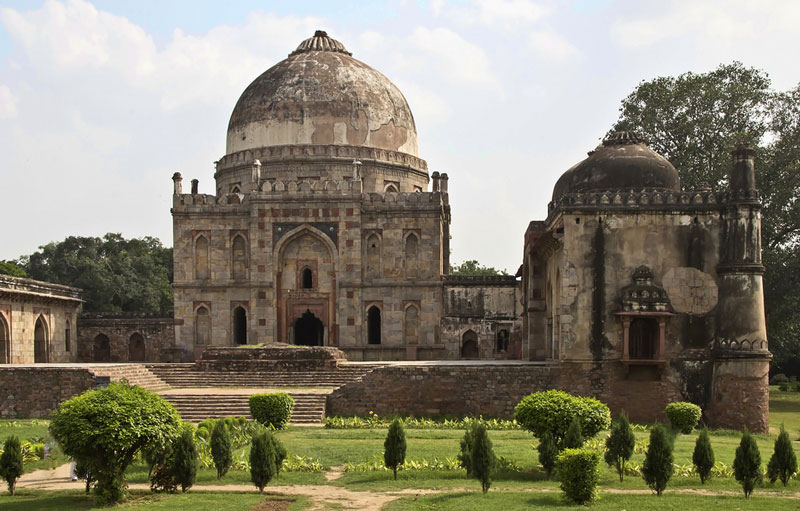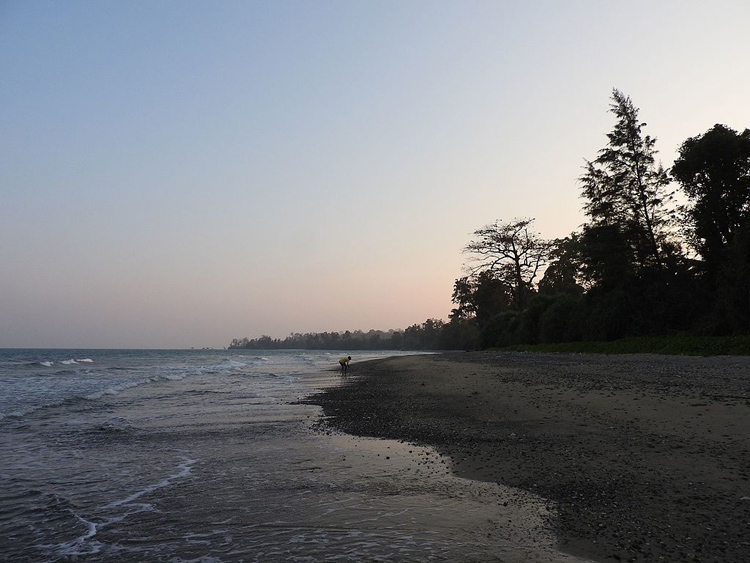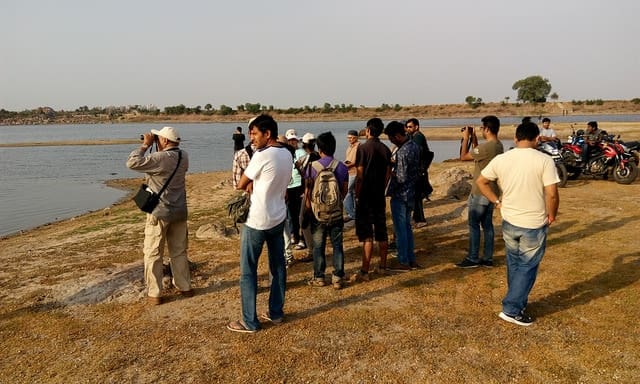Raja Dinkar Kelkar Museum in Pune stands as a testament to India’s vast and diverse cultural heritage. A gem of historical artifacts, this museum not only celebrates the intricate artistry and craftsmanship of the country but also reflects the daily life, traditions, and the evolution of Indian civilization. Visitors from across the world flock to this museum to experience the art, artifacts, and stories from India’s past, making it one of the most popular attractions in Pune.
History and Origins of Raja Dinkar Kelkar Museum
The Raja Dinkar Kelkar Museum was founded by Dr. Dinkar G. Kelkar in the year 1962. Dr. Kelkar, a renowned collector of ancient Indian artifacts, was deeply passionate about preserving the country’s artistic traditions. He started collecting items during his travels, seeking out antiques, musical instruments, sculptures, and other relics from various regions of India. Over time, his collection grew so vast that it required a dedicated space, leading to the establishment of this museum.
The museum was built with the purpose of providing a permanent home for Dr. Kelkar’s eclectic collection and to offer a glimpse into the artistic and cultural richness of India. The museum’s location in Pune, Maharashtra, strategically places it in a region that is rich in history, architecture, and tradition.
Exploring the Museum: A Deep Dive into Indian Art and Culture
The Raja Dinkar Kelkar Museum houses more than 20,000 artifacts, showcasing various aspects of Indian art and culture. Visitors are welcomed with an extensive array of sculptures, paintings, musical instruments, costumes, and everyday objects that offer a fascinating insight into India’s heritage. The museum is spread over three floors, each highlighting a distinct category of objects.
1. Sculptures and Statues
One of the most impressive aspects of the museum is its collection of Indian sculptures and statues. These pieces span several centuries, with some dating back to the 12th century. The museum’s display includes stone sculptures from the Gupta and Chola periods, showcasing intricate carvings of gods, deities, and mythical creatures. These sculptures provide an invaluable glimpse into the artistic traditions of ancient India.
2. Musical Instruments
Another standout feature of the museum is its vast collection of traditional Indian musical instruments. Dr. Kelkar’s passion for music is reflected in the extensive collection of instruments, including the sitar, tabla, veena, and a variety of wind instruments. The collection is not only a display of musical craftsmanship but also a celebration of the significance of music in Indian culture, where it plays a pivotal role in rituals, festivals, and daily life.
3. Paintings and Miniatures
The paintings and miniatures housed at the Raja Dinkar Kelkar Museum offer visitors a chance to witness the evolution of Indian art styles through the ages. The collection spans various schools of Indian painting, including Madhubani, Pahari, Rajput, and Mughal art. Each piece tells a unique story, ranging from religious themes to scenes of everyday life, courtly grandeur, and mythological tales.
4. Everyday Life and Traditional Crafts
The museum is also home to numerous objects that highlight traditional crafts and everyday life in India. From intricately carved wooden doors and utensils to textiles, jewelry, and coins, these artifacts represent the diverse craftsmanship that has flourished across the Indian subcontinent for centuries. The detailed craftsmanship on display brings to light the rich cultural heritage of different regions and communities.
5. Architectural Models and Artifacts
Visitors can also explore models of architectural marvels and other related artifacts. These displays provide insights into the architecture of ancient temples, palaces, and historical structures that define India’s heritage. Many of these models highlight the precision and beauty of ancient Indian architecture, showcasing how structures were designed and built with a deep understanding of science, mathematics, and art.
Unique Features of the Museum
Architectural Design of the Museum
The building housing the museum itself is an architectural marvel. The museum’s design is inspired by traditional Indian architecture, with intricate carvings and elements drawn from various parts of the country. The fusion of modern and ancient elements creates an inviting space where visitors can not only appreciate the exhibits but also feel the historical essence of India.
Focus on Preservation
The Raja Dinkar Kelkar Museum has always emphasized the preservation of India’s cultural treasures. Each artifact is carefully maintained, restored, and displayed in a manner that ensures its longevity for future generations. The museum works diligently to protect the historical significance of each object while making it accessible to the public.
Interactive Exhibits and Educational Programs
In addition to its rich collection, the museum offers interactive exhibits and educational programs. These initiatives are aimed at enriching the visitor’s understanding of Indian art, history, and culture. Special workshops, lectures, and guided tours provide in-depth knowledge about the objects on display and their historical context. This makes the museum a great place for students, art enthusiasts, and scholars to engage with Indian history in an immersive way.
Visitor Information and Practical Tips
Location and Accessibility
The museum is located in the heart of Pune, making it easily accessible to visitors. It is situated near the Shivaji Nagar area, with convenient transport links to major landmarks, bus stations, and hotels in the city. Public transport options and taxis are readily available for those traveling to the museum.
Timings and Entry Fee
The museum is open to visitors every day, except for public holidays. The general visiting hours are from 10:00 AM to 5:30 PM, providing ample time for visitors to explore the extensive collection. As for the entry fee, it is relatively affordable, making it accessible to all types of travelers. Discounts are often available for students and senior citizens.
Ideal Time to Visit
The best time to visit the Raja Dinkar Kelkar Museum is during the cooler months, from October to March, as the weather in Pune during this period is pleasant and ideal for exploring the city’s attractions.
Conclusion: A Must-Visit Cultural Hub in Pune
The Raja Dinkar Kelkar Museum is an unparalleled destination for those who wish to explore the artistic and cultural fabric of India. With its vast and diverse collection of artifacts, the museum offers an immersive experience that transports visitors through centuries of Indian history. Whether you’re an art lover, history enthusiast, or casual traveler, this museum promises a rich and enlightening experience that celebrates India’s magnificent heritage.
For anyone visiting Pune, this museum is not just a place to view artifacts, but a journey through the ancient traditions, creativity, and ingenuity that have shaped Indian civilization.
Frequently Asked Questions (FAQs) about Raja Dinkar Kelkar Museum, Pune
1. What is the Raja Dinkar Kelkar Museum?
The Raja Dinkar Kelkar Museum in Pune is a cultural and historical museum founded by Dr. Dinkar G. Kelkar. It houses a vast collection of over 20,000 artifacts, showcasing India’s rich cultural heritage through sculptures, paintings, musical instruments, everyday objects, and more.
2. Where is the Raja Dinkar Kelkar Museum located?
The museum is located in the Shivaji Nagar area of Pune, Maharashtra, India. It is easily accessible by public transport, taxis, and private vehicles, making it convenient for tourists to visit.
3. What are the main highlights of the museum?
Some of the main highlights of the Raja Dinkar Kelkar Museum include:
- Sculptures and statues from ancient Indian periods, such as the Gupta and Chola dynasties.
- A collection of musical instruments, including sitars, tablas, and veenas.
- Paintings and miniatures representing different Indian art schools, including Rajput, Mughal, and Pahari.
- Traditional crafts and everyday objects that showcase the diversity of Indian culture.
4. What is the entry fee for the museum?
The entry fee for the Raja Dinkar Kelkar Museum is relatively affordable. The cost may vary based on age, nationality, and any special discounts. Students and senior citizens may be eligible for discounted entry. It is advisable to check the museum’s official website or inquire at the ticket counter for the most up-to-date information.
5. What are the museum’s operating hours?
The museum is generally open every day, except public holidays. The usual visiting hours are from 10:00 AM to 5:30 PM, allowing ample time to explore the exhibits.
6. Is there a guided tour available at the museum?
Yes, the museum offers guided tours that provide in-depth explanations about the exhibits. These tours enhance the visitor’s experience and understanding of the historical and cultural context of the displayed artifacts. It is advisable to check in advance for availability or book a guided tour.
7. What is the best time to visit the museum?
The best time to visit the Raja Dinkar Kelkar Museum is during the cooler months of October to March when the weather in Pune is pleasant, making it an ideal time for sightseeing.
8. Is the museum suitable for children?
Yes, the museum is suitable for children, especially those interested in learning about art, history, and culture. The museum’s diverse exhibits provide a rich, educational experience that can be both fun and informative for young visitors.
9. How long does it take to explore the museum?
The time it takes to explore the Raja Dinkar Kelkar Museum can vary depending on the visitor’s interest in the exhibits. On average, a visit may take between 1.5 to 2 hours. For a more thorough exploration or guided tour, it may take longer.
10. Are there any facilities available for visitors?
Yes, the museum provides basic facilities, including restrooms, a museum shop, and a small café where visitors can relax and enjoy refreshments. The museum is also wheelchair accessible, ensuring that it caters to visitors with special needs.
11. Can I take photos inside the museum?
Photography is allowed in most sections of the museum; however, some exhibits may have restrictions. Visitors are encouraged to check the specific guidelines at the entrance or with the museum staff to ensure compliance with any photography rules.
12. Is the museum accessible for people with disabilities?
Yes, the Raja Dinkar Kelkar Museum is wheelchair accessible, with ramps and other facilities designed to accommodate visitors with mobility challenges. If additional assistance is required, visitors can contact the museum staff.
13. Are there any special events or exhibitions at the museum?
The museum occasionally hosts special exhibitions, workshops, and lectures related to Indian culture, art, and history. These events are typically announced on the museum’s official website or social media channels. It is recommended to check in advance for any special programs during your visit.
14. How can I reach the museum from Pune Railway Station?
The museum is located about 3-4 km from Pune Railway Station. Visitors can take a short taxi ride, rickshaw, or use public transport, which will take approximately 15 to 20 minutes to reach the museum.
15. Is there parking available at the museum?
Yes, the Raja Dinkar Kelkar Museum provides parking facilities for visitors. However, parking spaces can fill up quickly during peak times, so it is recommended to arrive early or use alternative transport if possible.




















